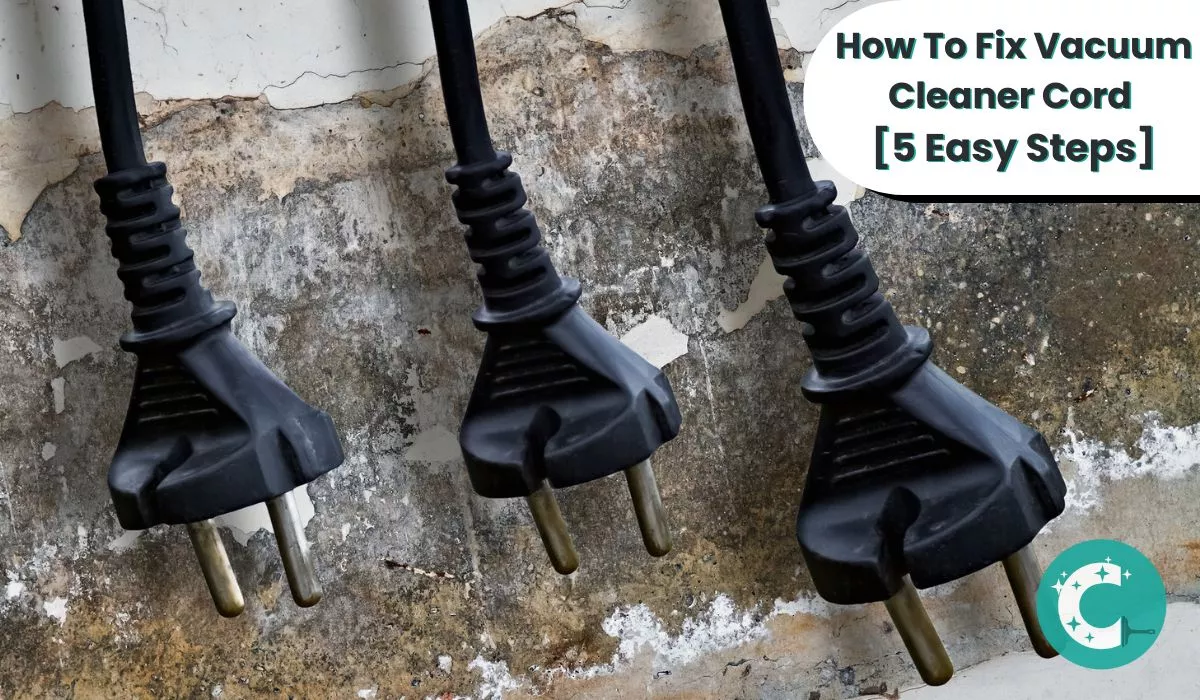How to Fix Vacuum Cleaner Cord (5 Easy Steps)
When we’re busy vacuuming the whole room, we’re not paying attention to the cord. It’s easy to accidentally drag it over a sharp object or to have the whole unit run over the cord.
Because a vacuum will not function properly without its cord, it is important to make sure the cord is replaced when needed. But there are some other things that could go wrong with the cord – and there might not be any easy fixes for them.
So, just don’t skip any part and go through this entire guide discussing how to fix a vacuum cleaner cord based on different issues.
Can You Fix a Vacuum Cleaner Cord?
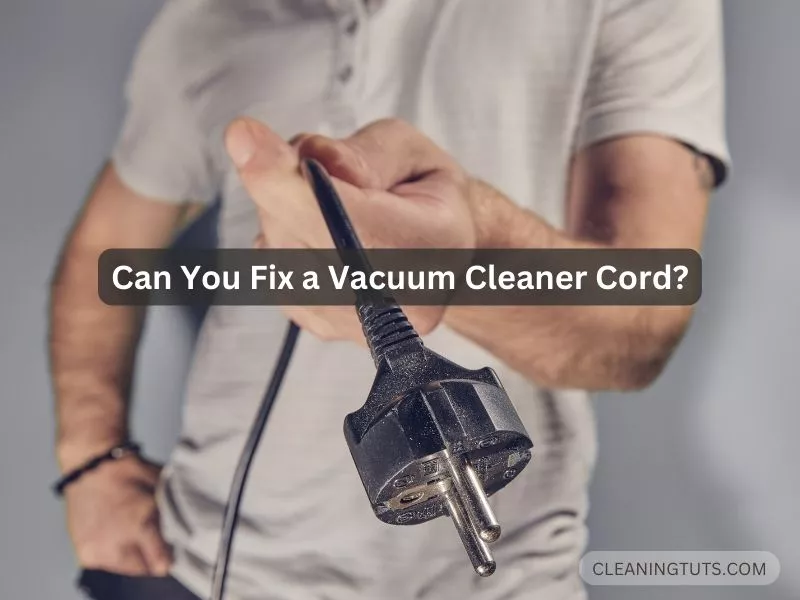
Yes, you can. If it’s not entirely worn out or the vacuum cleaner is pretty new yet, a little bit of fixing will help.
Exactly How to Fix Vacuum Cleaner Cord?
Determine the cause, and according to it, you need to tape, interweave, change the plug, or simply take the help of an expert for repairing the cord issue.
Now before we explain stuff about fixing vacuum cleaner cords, you should be aware of the causes that lead to such problems.
The Most Common Causes Are:
Due to excessive stretching of the cord, damage can take place. And this is something that happens when one works without caring about the cord swirling and tangling on the floor.
It can stick to a certain part and you might be unknowingly pulling the cord to reach a certain place, uncasing the stretch. The cord will break loose.
And this will halt the electrical current transferring to the unit. You should be able to repair a vacuum cleaner cord that’s stretched.
Another common reason behind the need for vacuum cleaner cord repair is splitting. The damaged vacuum cord seems easy enough to repair using some electrical tape wrapping.
However, that will just make the brush roller vulnerable. As it would constantly run over the cord that is taped.
Pets do not enjoy loud sounds; we all know that. And that could be the reason for your pet to end up chewing the cord of the vacuum cleaner as a form of showing its displeasing feelings.
Bitten cords to an extent might be possible to fix. But in some cases, you may require to replace the vacuum cleaner cord.
And the final one is the twisted cord. If it gets twisted, it is probably because you tried wrapping the piece around the unit after finishing vacuuming.
The threads of wire will break when you do so. And that’s also a good reason for the vacuum cleaner to run down.
Here’s How to Fix Vacuum Cleaner Cord
Follow the things mentioned to repair a damaged cord of a vacuum cleaner.
Observing the Damage
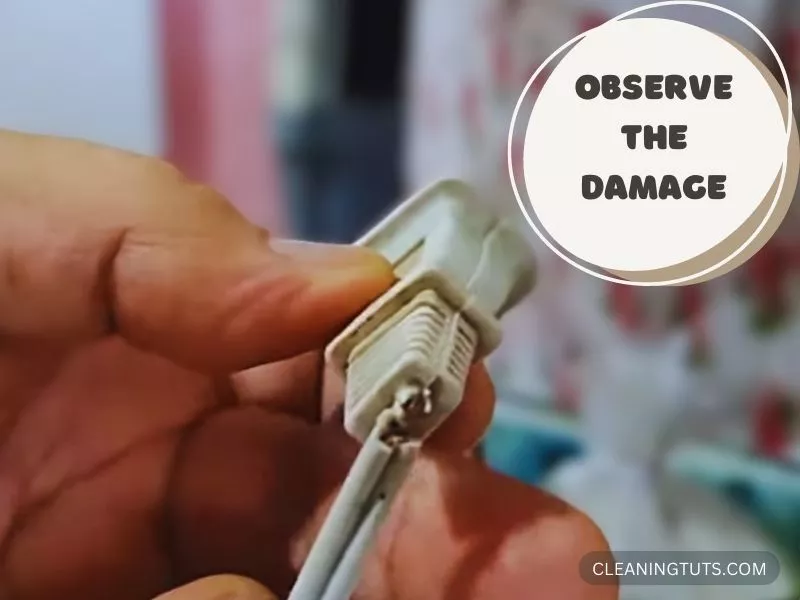
Exactly what the damage has been done, that’s what you need to find. It could be at the switch area of the cod. Also, can happen in the plug or even in the center part. You have to also determine what type of damage it is.
Taping for Trivial Damage
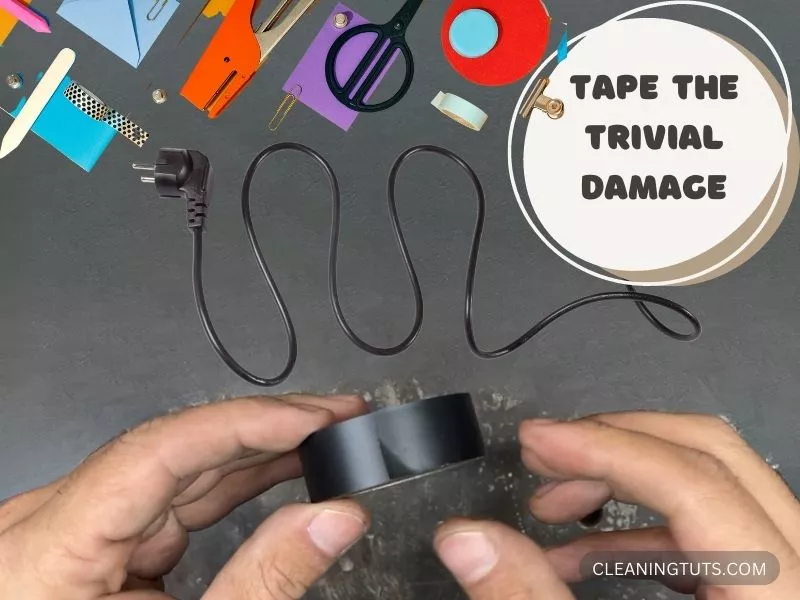
Now if you conclude that the damage is a pretty trivial type, then simply repair the cord of the vacuum cleaner using some electrical tape. You want to avoid any type of masking here. The same goes for duct tape as well as shipping manners.
Choosing electrical tapes sounds good because they are shock-sensitive. And also, it can insulate the inner thread well. So, there will be less risk of shocks or sparks.
Interweaving the Wire
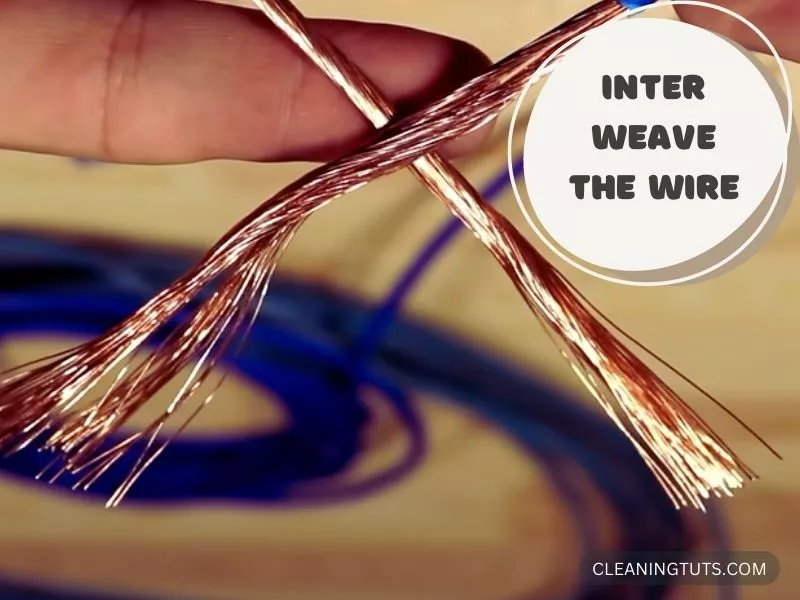
A few cords will need you to interweave the wires together for fixing it. Sometimes you may have to cut it as well. And in a completely bad case, you’ll need to replace the good plug of the vacuum cleaner.
Start by cutting the cord’s damaged area. You want to strip ½ inches of the part that is plastic. And this will expose the wires that are similar to this thread.
Now you can go ahead and twist the wires together and use a thick electrical tape layer for wrapping the lines. And that should be it!
If You Need to Replace the Plug
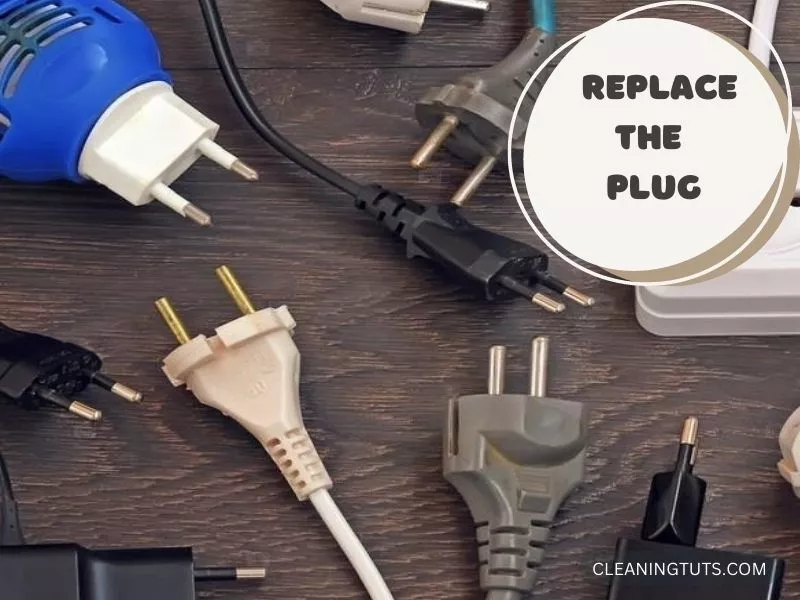
Now if you face a vacuum cleaner cord problem that cannot be fixed or repaired, replacement becomes the only choice. And in that case, here’s what you need to do:
Taking Help of the Expert
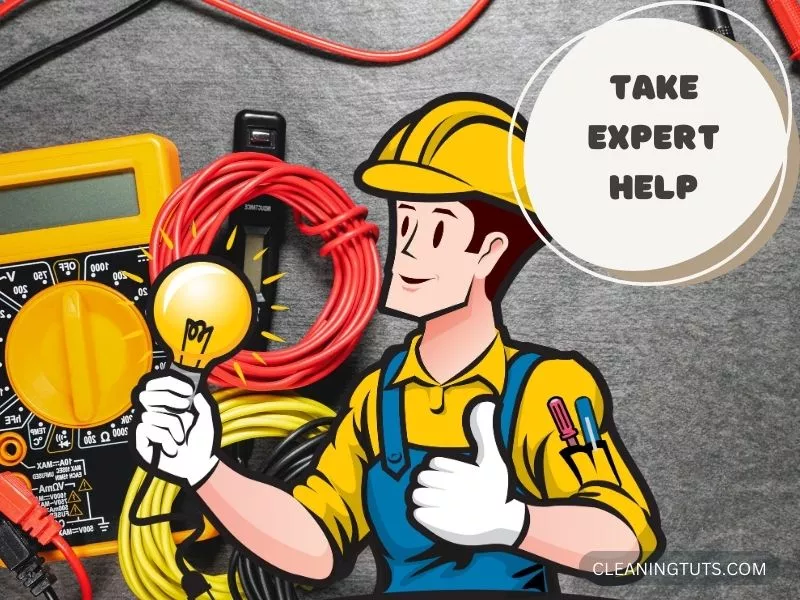
Once you’ve successfully fixed your cord, the next step is to test whether your vacuum cord is fixed. If the vacuum isn’t powering on after repairing the cord, the problem might be in other vacuum cleaner parts.
You might just not want to spend money but in some cases, it’s just not possible to avoid the need. If the vacuum cleaner has troubles with the cord that you cannot fix, it’s best to take help from an expert.
You might be required to consider a replacement of one or more parts if there’s a need including the cord. Find out how much it costs to replace a vacuum cord from the professional you take help from and they’ll give you an idea.
A severely damaged cord that’s not treated early, can cause other electrical issues in your unit. And that’s why you should not try to avoid fixing it.
What Are the Common Reasons for Vacuum Cord Damage?
If you keep replacing your vacuum cord, it may help to know what causes the damage to prevent the damage. Here are some of the common reasons.
Pulling Your Cord Too Far
This is one of the most common causes of vacuum cord problems. This happens when you keep pulling the wires farther than they can handle during vacuuming. As a result, wires in the cord loosen and stop the electric flow.
To avoid this, always ensure that you have sockets all over the house – by doing so, you can reach all the surfaces without stressing the cord.
Split Cord
This is another reason your vacuum cord might be damaged. A split cord happens when you use the electric tape to fix the broken cable – and then the brush roller is at risk of running over the tape, causing problems.
Twisted Cord
It’s easy for your vacuum cord to twist if you wrap it on your vacuum cleaner after cleaning is done. This causes the wire threads to twist or break, easily slowing down the vacuum motor.
Chewed Cord
This was my main problem with all the electric cords in my house when my dog was a pup. He chewed on everything, which was a huge problem.
In some cases, even grown pets may chew on the vacuum cord if they’re scared of it. They become aggressive towards it, hence the chewing.
Wrapping Up
That’s It! We tried to give you an idea of common vacuum cleaner cord fix tips. Hopefully, you were able to bring it back to work.
However, in some cases, it’s not enough to know only how to fix a vacuum cleaner cord. If your unit isn’t working properly, it could be because of internal issues that you’re not aware of. You may need to have the motor or other components of the vacuum inspected and repaired by a professional. Additionally, if you notice that the suction power has significantly decreased, it could be due to clogged filters or a full bag. Another factor to consider is the tide floor cleaning amounts, as excessive dirt and debris can clog the vacuum and hinder its performance. If you have tried troubleshooting the issue with the cord and still have concerns, it’s best to have the unit examined by a qualified technician.
In this case, it’s important to have a professional check it out.

